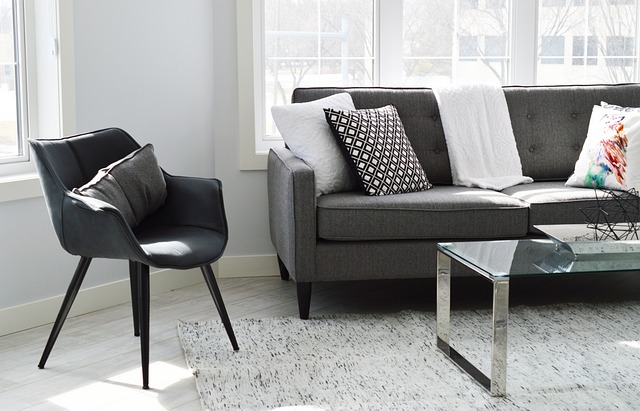Essential Furniture Selection Guide for Modern Homes
Choosing the right furniture for your home involves balancing functionality, style, and space constraints. With evolving design trends and varying living situations, understanding which pieces serve as decor must-haves and how to maximize smaller spaces has become increasingly important for homeowners and renters alike.

Must-Have Furniture Pieces for Every Home
Every well-designed home requires certain foundational furniture pieces that serve both practical and aesthetic purposes. A quality sofa anchors the living room while providing comfortable seating for daily use and entertaining guests. Dining tables create gathering spaces for meals and conversations, making them essential for most households.
Storage solutions like bookcases, credenzas, and wardrobes help maintain organization while contributing to the overall design scheme. A comfortable bed frame with proper support ensures restful sleep, while nightstands provide convenient surfaces for essentials. Coffee tables and side tables offer functional surfaces while filling visual gaps in room layouts.
Accent chairs serve dual purposes by providing additional seating and introducing color or texture to spaces. These versatile pieces can transform room dynamics and create conversation areas when paired with existing furniture.
Maximizing Small Living Room Spaces
Small living rooms require strategic furniture selection to maintain functionality without overwhelming the space. Multi-functional pieces prove invaluable in compact areas, such as ottoman storage benches that provide seating, storage, and surface space simultaneously.
Wall-mounted shelving eliminates floor space requirements while offering display and storage opportunities. Nesting tables provide flexible surface options that can be tucked away when not needed. Sectional sofas designed for small spaces often include built-in storage compartments and can define room boundaries in open floor plans.
Choosing furniture with exposed legs creates visual openness by allowing light to flow underneath, making rooms appear larger. Glass or acrylic materials maintain functionality while reducing visual weight. Mirrors strategically placed near windows or light sources amplify natural light and create depth illusions in confined spaces.
Contemporary Modern Furniture Trends
Modern furniture emphasizes clean lines, minimal ornamentation, and functional design principles. Current trends favor sustainable materials like reclaimed wood, bamboo, and recycled metals, reflecting growing environmental consciousness among consumers.
Modular furniture systems allow customization and reconfiguration as needs change, appealing to mobile lifestyles and evolving space requirements. Mid-century modern pieces continue gaining popularity, with their timeless silhouettes and quality craftsmanship offering longevity in both style and durability.
Technology integration has influenced modern furniture design, with built-in charging stations, LED lighting, and smart home connectivity becoming standard features. Neutral color palettes dominate contemporary collections, with occasional bold accent pieces providing personality without overwhelming spaces.
| Furniture Category | Provider | Price Range | Key Features |
|---|---|---|---|
| Modular Sectional Sofa | West Elm | $1,200 - $2,800 | Customizable configurations, modern fabrics |
| Storage Ottoman | IKEA | $80 - $250 | Multi-functional, various sizes available |
| Dining Table Set | CB2 | $600 - $1,800 | Space-saving designs, contemporary styling |
| Wall-Mounted Shelving | Target | $40 - $200 | Easy installation, multiple finishes |
| Accent Chair | Wayfair | $150 - $800 | Wide style selection, competitive pricing |
Prices, rates, or cost estimates mentioned in this article are based on the latest available information but may change over time. Independent research is advised before making financial decisions.
Balancing Quality and Budget Considerations
Investment in quality furniture pieces can provide long-term value through durability and timeless design. Solid wood construction typically offers superior longevity compared to particle board alternatives, though initial costs may be higher.
Consider prioritizing spending on high-use items like sofas, mattresses, and dining tables while selecting budget-friendly options for accent pieces that can be easily updated. Shopping during seasonal sales events often yields significant savings on major furniture purchases.
Factory outlet stores and online retailers frequently offer competitive pricing on quality pieces, though shipping costs for large items should factor into total expenses. Local furniture stores may provide delivery and setup services that add value to purchases.
Creating Cohesive Interior Design Schemes
Successful furniture selection involves considering how individual pieces work together within the broader room context. Establishing a consistent color palette helps unify diverse furniture styles and prevents spaces from appearing chaotic or disconnected.
Scale and proportion play crucial roles in furniture arrangement, with oversized pieces overwhelming small rooms while undersized furniture can make large spaces feel sparse. Mixing textures and materials adds visual interest without requiring dramatic color variations.
Consider traffic flow patterns when positioning furniture to ensure comfortable movement throughout spaces. Leave adequate clearance around key pieces and maintain clear pathways between frequently used areas.
Thoughtful furniture selection combines practical needs with personal style preferences to create comfortable, functional living spaces. Whether working with compact quarters or expansive rooms, understanding fundamental design principles and available options enables confident decision-making. Modern furniture continues evolving to meet changing lifestyle demands while maintaining the timeless appeal of well-crafted, purposeful design.




